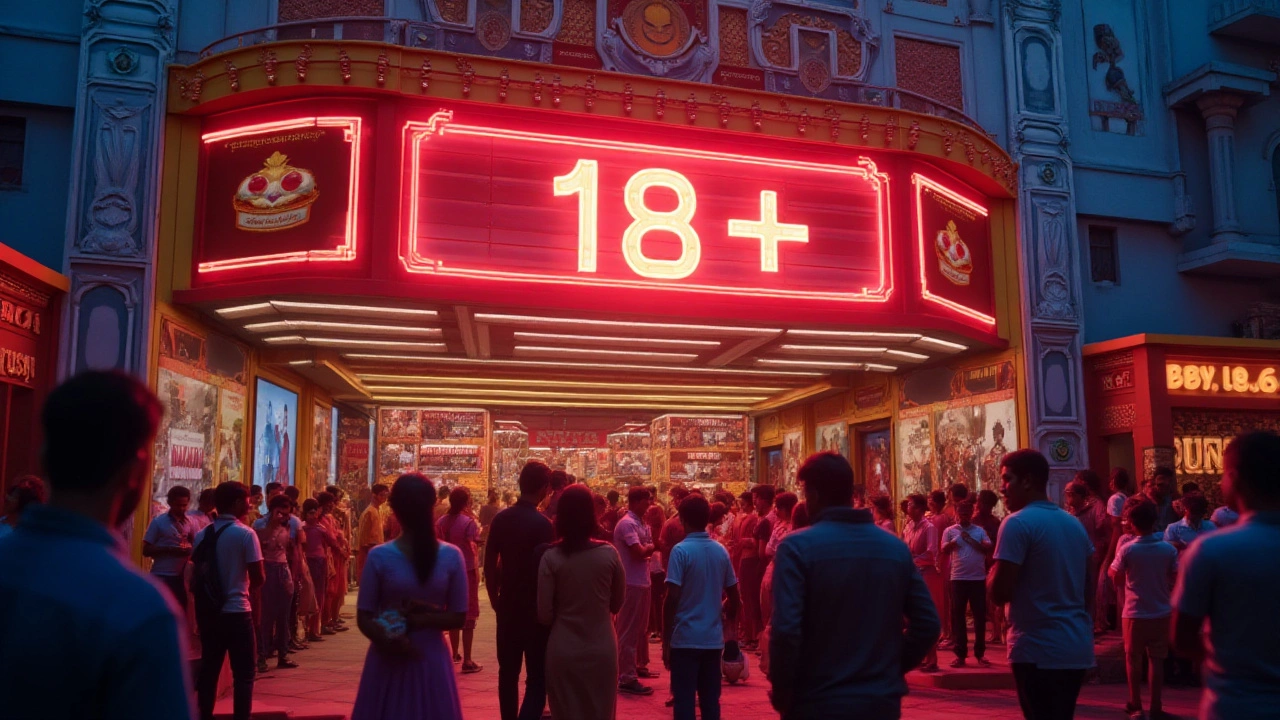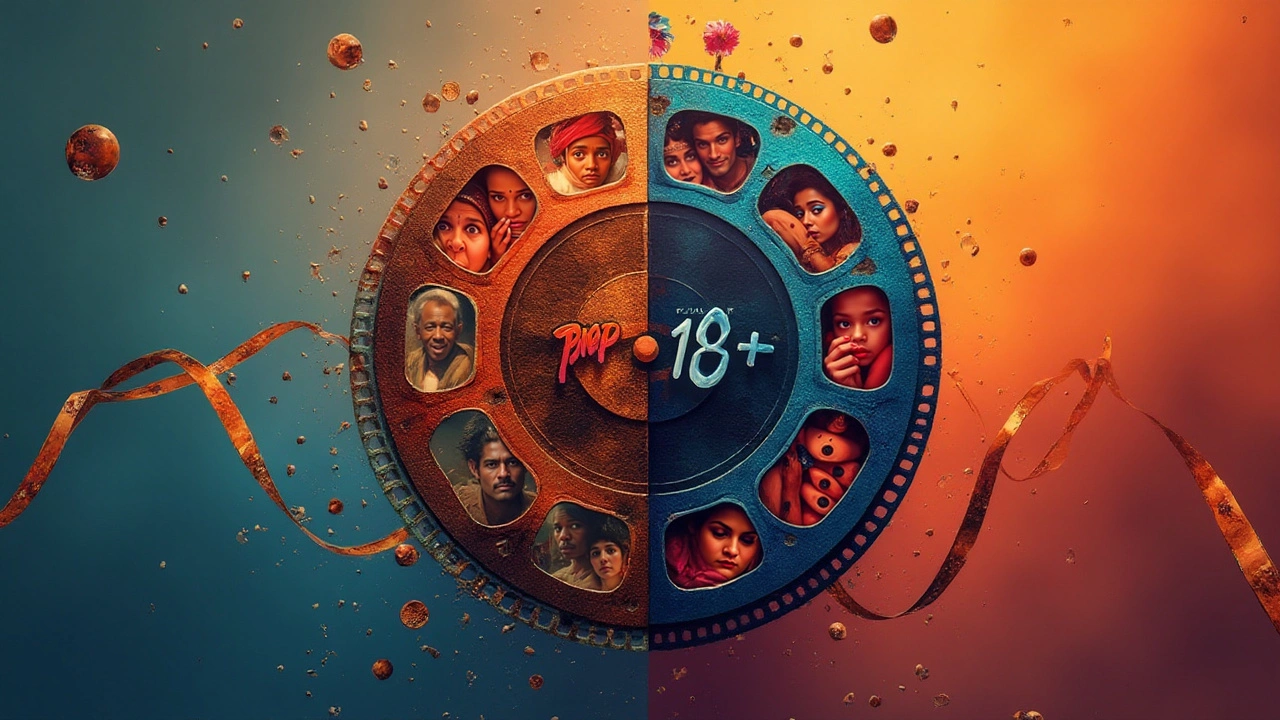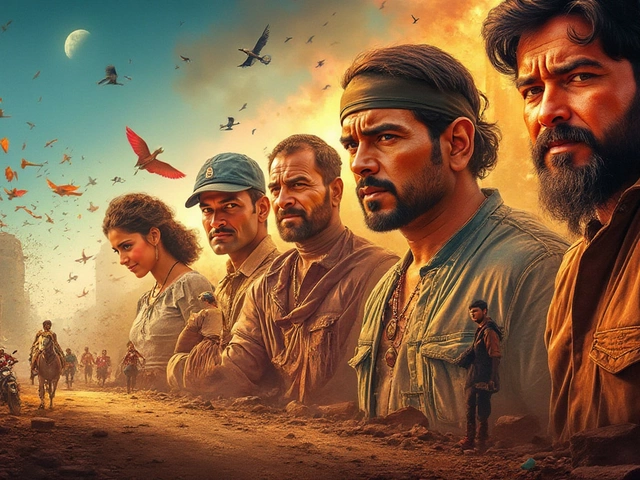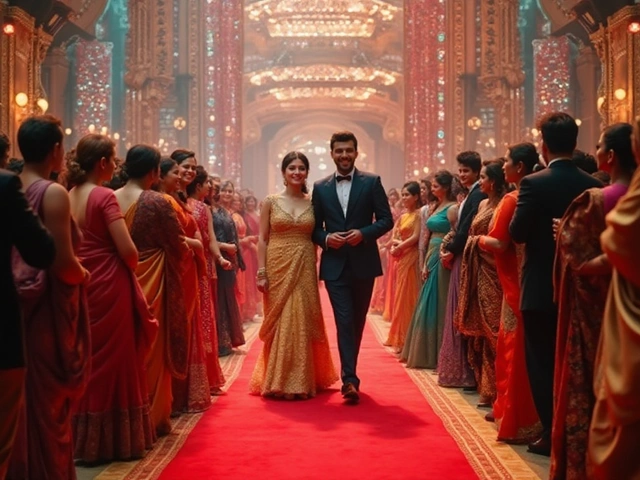
When one notices an '18+' label splashed across a movie poster—or discreetly appearing before a film begins—it often leaves the audience pondering its implications. While commonly understood as content suitable for mature audiences, the nuances of this rating can be quite intriguing, especially within the diverse cultural tapestry of India.
The Central Board of Film Certification (CBFC) plays a pivotal role in attaching these ratings, ensuring that the film's content aligns with the standards deemed appropriate for audiences. From exploring themes of intense violence to intimate human relationships, such films venture into territories that could be challenging or provocative for younger viewers.
For filmmakers, this classification can influence both creative expression and commercial success. Therefore, understanding the '18+' rating goes beyond mere curiosity—it’s about grasping the delicate balance between art, audience, and societal norms.
- Significance of 18+ in Indian Cinema
- How the CBFC Determines Ratings
- Impact on Audience and Filmmakers
- Cultural Context and Controversies
Significance of 18+ in Indian Cinema
In the vast landscape of Indian cinema, the '18+' rating holds a unique place, symbolizing a threshold where entertainment intersects with adult themes. For many cinephiles, this isn't just about artistic expression but also a reflection of societal evolution. The '18+' classification is not merely a gatekeeper of age but a necessary instrument that respects cultural sensibilities while pushing creative boundaries. By setting a distinct line, it opens doors for filmmakers to embrace more provocative subjects such as complex human emotions, moral ambiguities, and the exploration of taboos. This can include narratives revolving around mature topics like intense violence, sexual content, or strong language. Such themes, while sensitive, can be pivotal in portraying the depth of human experiences in a way that resonates, challenges, and possibly changes perspectives.
The institutional guardian of these ratings in India is the Central Board of Film Certification (CBFC). Given India's diverse cultural fabric, the CBFC often walks a tightrope, aiming to balance traditional values with progressive ideas. It's worth noting that Indian cinema is informed by a spectrum of cultures, languages, and communities, each with its distinct level of acceptance toward mature content. This is where the 18+ movies facilitate the depiction of stories that may not fit within the confines of mainstream categories. One of the fascinating aspects of this rating is its role in not only safeguarding viewers below the age threshold but also protecting the filmmakers from unwarranted backlash when delving into controversial topics.
"The 18+ rating in India acts as both a shield and a sword for filmmakers, providing a sanctum for exploring controversial topics while equipping them with the responsibility of strong storytelling," noted renowned Indian filmmaker Anurag Kashyap in an interview.This encapsulates not only the creative liberty provided by the 18+ certification, but also the constraint and accountability that comes alongside. Filmmaking under this classification demands a careful crafting of narratives, so they maximize engagement without descending into the realm of the gratuitous. Understanding audience expectations becomes crucial, as the potential for a qualitative shift in the viewer’s sentiment exists. It encourages filmmakers to adopt more subtle, sophisticated approaches when narrating stories with intense emotional or ethical complexity.
The impact of the 18+ classification extends beyond creative liberties and societal influence. Economically, it can affect a film's performance at the box office. These films generally attract a niche audience due to limited screen availability or regional censorship, impacting promotional strategies. For instance, marketing strategies could focus more heavily on digital platforms like OTT services, as such content often garners strong viewership among develop-minded and mature audiences. This shift highlights the adaptability inherent in the Indian film industry as it faces evolving consumer demands and diverse regulation across different states. Overall, the '18+' rating remains a powerful tool—one that encourages the evolution of Indian cinema while respecting cultural context.
How the CBFC Determines Ratings
The task of categorizing films by age-appropriateness falls to the Central Board of Film Certification (CBFC) in India—a process that isn't just about sticking labels or letters on cinematic works. Rooted in the Cinematograph Act of 1952, the CBFC wields the power to approve, or demand edits to, films before they reach the Indian public. Indian cinema has an enormous influence on cultural norms and societal trends, making the board's responsibilities not just regulatory but also deeply cultural.
When it comes to conferring an 18+ movies rating, the CBFC focuses on various aspects that could impact younger audiences. They closely examine themes of explicit sexuality, graphic violence, and mature psychological content that might require a nuanced understanding. Considerations do not simply entail the existence of these elements but also their context within the story. For instance, violence is assessed based on its necessity to the narrative and realism portrayed.
Factors Influencing a Rating
In evaluating films, the CBFC employs a set of guidelines that cover several crucial factors. Language, for instance, is scrutinized not just for its explicitness, but also for its tone and intent. Similarly, scenes depicting drug use or criminal activity are evaluated for potential glamorization. It's a rigorous process that seeks to protect younger viewers yet allow creative expression to flourish. One of the more recent updates to these guidelines pertains to digital and online releases, reflecting a growing need to address content distributed via streaming platforms."The CBFC's mission is to promote the film industry with responsibility towards the audience's taste," remarked Prasoon Joshi, the previous chairperson of CBFC. This demonstrates the board's balancing act between protecting societal norms and allowing nuanced storytelling to thrive.
Interestingly, the composition of the certification panel itself often brings diverse perspectives. Typically composed of individuals ranging from educators to renowned industry figures and even sociologists, this panel ensures that multiple viewpoints are considered during the decision-making process. Yet, there remain critiques, sparking debates over artistic freedom and censorship. Such dialogue underscores the intricate and sometimes contentious task of managing film certification in a vastly diverse society like India.

Impact on Audience and Filmmakers
The "18+" rating system has a profound influence on both **Indian cinema** audiences and filmmakers. For viewers, the rating serves as a cautionary signpost, directing them toward content designed for mature minds. Films tagged with this marker often delve into complex subjects such as intense violence, intricate adult relationships, or politically sensitive issues. These films are designed to evoke deep emotions and provoke thoughtful discussions, providing a cinematic experience that lingers well after the credits roll. However, it also places a lens of scrutiny over the content, sometimes inviting controversy or causing friction within diverse cultural communities in India. Audience reception can vary widely, influenced by personal beliefs, cultural values, and readiness to embrace different narratives presented on screen.
On the other side of the spectrum, filmmakers are asked to strike a delicate balance between artistic freedom and societal responsibilities. While crafting *18+ movies*, directors and producers often aim to push boundaries and challenge societal norms, encouraging robust dialogue around topics that may traditionally be sidelined. However, this comes with its own set of challenges and constraints. The **Central Board of Film Certification (CBFC)** acts as both gatekeeper and guide, influencing the final edit of a film intended for adult audiences. Where a movie might initially boast uncensored action or raw dialogues, the certification process can sometimes lead to alterations that soften these elements.
"As filmmakers, we are both the creators and curators of stories. The '18+' rating gives us the liberty to explore reality, but it also bestows a responsibility to present it with authenticity and respect," noted acclaimed Indian director Anurag Kashyap in an interview.
The economic impact cannot be overlooked either. An *18+ rating* inherently restricts viewership to adult audiences, which could limit the box-office earnings compared to a film with a more general rating. However, it doesn't just disadvantage; it attracts a target niche that seeks the enriched narratives it often entails. Filmmakers may choose to court international film festivals or OTT (Over-The-Top) platforms where such content can thrive beyond traditional theaters. This strategic decision could cater both to passionate cinephiles and international viewers unencumbered by local cinema restrictions.
The Role of Marketing with "18+" Films
Marketing *18+ movies* presents its unique set of hurdles and opportunities. Curating trailers, posters, and promotional campaigns that respect the restrictions yet intrigue viewers demands creativity and insight. Targeted campaigns can make use of digital platforms where age restrictions are easier to enforce and audiences can be more accurately segmented. Filmmakers leverage online communities, allowing the buzz to build through behind-the-scenes content and director’s cut releases that appeal to tech-savvy adults. By understanding and adapting to these challenges, both audiences and filmmakers can enjoy a more enriched viewing and creative experience.
Cultural Context and Controversies
The '18+' rating on films in India is not merely a matter of age; it delves deep into the cultural intricacies and societal norms that define this vibrant nation. Indian cinema, often a reflection of its diverse society, grapples with various themes—some of which might not conform to traditionally accepted values. Films that explore subjects such as bold intimacy, profound violence, or controversial political scenarios often find themselves under scrutiny. The sensitivity towards these themes stems from a cultural fabric that is both traditional and modern, creating a dynamic tension between progressive narratives and conservative values.
One can't discuss the 18+ movies in India without highlighting the influential role of the Central Board of Film Certification (CBFC). Tasked with maintaining a balance between creative freedom and societal sensibilities, the CBFC's decisions can often result in contentious debates. For instance, when the film "Udta Punjab" was released, the CBFC faced criticism for demanding numerous cuts, and this sparked widespread debate about censorship and creative liberty. Many filmmakers argue that such interventions by the board serve to restrict the storytelling facet of Indian cinema, prompting intense discussions about the rights of creators.
"Censorship reflects a society's lack of confidence in itself. It is a hallmark of an authoritarian regime." - Potter Stewart
Yet, it's not only controversy that shapes the perception of '18+' films; the classification can, paradoxically, attract audiences. The allure of the forbidden or the curiosity to explore mature themes can draw viewers who relish narratives outside the mainstream. However, for filmmakers, securing an 18+ rating sometimes translates to a limited box office reach, as the classification restricts the audience demographic, directly influencing revenue potential.
Controversies are not always detrimental; they can ignite conversations about change and evolution within society. The emphasis on cultural stories, unique to the subcontinent, often resonates on a global stage, allowing local filmmakers to craft stories that surpass borders while sparking debates about universality versus authenticity. The narrative tug-of-war between the cultural fabric of India and the influences of globalization continues to shape the critical conversations around movie ratings. This tension frames the evolution of Indian cinema, as it evolves to candidly present topics that are often considered taboo, seeking acceptance and understanding rather than sensationalism.





Write a comment